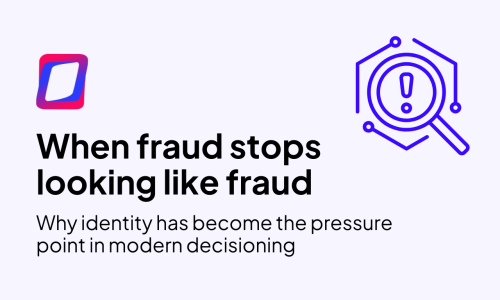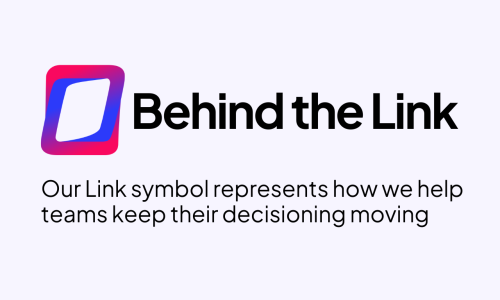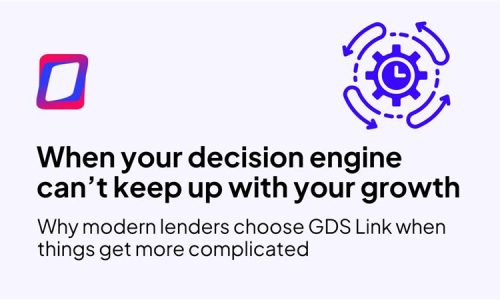How Rising Delinquencies and Charge-Offs Are Impacting Collection Strategies
In today’s volatile economic environment, financial institutions are grappling with rising delinquencies and charge-offs. These trends are forcing lenders to re-evaluate their collection strategies to maintain financial stability and optimize recoveries. Javier Alvarado, Director of Financial Services at TransUnion, recently shared critical data with GDS Link, highlighting these challenges and discussing their implications for collection strategies. Here’s a detailed look at the current landscape and its impact on collections.
Increasing Delinquencies Across Product Lines
A troubling shift in consumer behavior is evident. According to recent TransUnion data, delinquencies have been on the rise across all major product lines, including auto loans, credit cards, personal loans, and mortgages, over the past two years. The only exception is student loans, which have seen a slight decrease. This trend indicates a broad-based increase in financial stress among consumers, which poses significant challenges for lenders.
Surging Credit Card Balances
One of the most alarming trends is the surge in credit card balances, which have now surpassed the $1 trillion mark. This trend underscores consumers’ reliance on credit to manage their daily expenses and financial obligations. Here’s a closer look at the dynamics behind this surge and its implications:
Heavy Reliance on Credit
Consumers increasingly use credit cards to bridge the gap between their income and expenditures. Several factors drive this reliance, including stagnant wages, rising living costs, and inflation. As a result, many households are accumulating higher credit card balances, which can quickly become unmanageable.
Higher Balances and Increased Minimum Payments
With rising credit card balances come higher minimum payments. Consumers must pay more monthly to avoid late fees and additional interest charges. However, many can only make the minimum payments, leading to a slow reduction in principal balances and a longer duration of debt.
Impact on Near-Prime and Prime Consumers Interestingly, near-prime and prime consumers—those with relatively good credit scores—are among the highest spenders and debt accumulators. Lenders typically consider this demographic to be at a lower risk, but their growing debt levels are a cause for concern. As these consumers accumulate more debt, their financial stability is increasingly jeopardized, raising the risk of delinquencies and defaults.
Increased Financial Burden and Risk of Delinquencies
The growing reliance on credit cards and the associated financial burden elevate the risk of delinquencies and defaults. As consumers need help to keep up with higher balances and minimum payments, the likelihood of missed payments increases. This trend is particularly troubling for lenders, as it suggests a broader financial strain among consumers that could lead to higher default rates and increased charge-offs.
Economic Implications
The surge in credit card balances has broader economic implications as well. High consumer debt levels can dampen economic growth, as more income is directed towards debt repayment rather than consumption and investment. Additionally, rising delinquencies can impact lenders’ profitability and financial stability, necessitating more stringent credit controls and innovative collection strategies.
Rising Serious Delinquencies in Mortgages and Auto Loans
Serious delinquency rates for mortgages and auto loans are also trending upward. Consumers feel the financial pressure from higher interest rates and increased payment obligations, leading to more accounts falling behind. This trend is particularly concerning for lenders, indicating potential future losses and a more challenging recovery environment.
Impact of Higher Interest Rates
Higher interest rates are one of the primary drivers behind the rising delinquency rates in mortgages and auto loans. As interest rates climb, the cost of borrowing increases, leading to higher monthly payments for existing loans. This strains consumers’ finances, particularly those with variable-rate loans that adjust with market conditions. For new borrowers, the higher interest rates mean more expensive mortgage and auto loan payments from the outset.
Increased Payment Obligations
Along with rising interest rates, increased payment obligations compound the financial burden on consumers. The higher cost of living, driven by inflation and other economic factors, means that more of a household’s budget is being allocated to essential expenses like housing, utilities, and food. This leaves less disposable income available to meet loan payment obligations, increasing the likelihood of missed payments and delinquency.
Mortgages: Rising Delinquency Rates
Higher mortgage payments can quickly become unmanageable, especially for those who may have lost income or faced unexpected expenses. As more homeowners struggle to make their payments, the risk of foreclosure increases, which can have severe consequences for borrowers and lenders.
Auto Loans: Increasing Delinquency Trends
Auto loans are also seeing a significant uptick in serious delinquencies. The auto loan market has expanded in recent years, with more consumers taking on larger loans to finance new and used vehicle purchases. However, the rising cost of vehicles and higher interest rates mean that auto loan payments are becoming increasingly burdensome. When consumers cannot keep up with their auto loan payments, repossessions become more common, which can be financially and emotionally devastating for the borrowers.
Implications for Lenders
For lenders, delinquency rates in mortgages and auto loans signal potential future losses and a more challenging recovery environment. Delinquencies can lead to a higher volume of non-performing loans, which are costly to manage and can impact lending institutions’ overall financial health. Additionally, foreclosure or repossession is resource-intensive and can result in significant losses if the recovered assets sell for less than the outstanding loan amounts.
Need for Proactive Measures
In light of these rising rates, lenders must proactively mitigate risk. This includes implementing more rigorous credit assessments, offering loan modifications or refinancing options to struggling borrowers, and enhancing collection strategies to address delinquencies before they become severe.
GDS Link provides advanced risk management solutions tailored to today’s financial challenges. Our comprehensive tools enable lenders to perform in-depth credit assessments, optimize loan modifications, and enhance collection strategies effectively. Learn more about how GDS Link can help here.
By taking these steps, lenders can better manage their portfolios and support borrowers in maintaining their financial health.
Escalating Charge Offs
Recent data shows a significant spike in the amount of debt being charged off by lenders. A charge-off occurs when a lender determines that a debt is unlikely to be collected and removes it from their balance sheet, essentially acknowledging it as a loss. The fact that charge-offs increased from $10 billion in late 2021 to over $32 billion last quarter is indicative of widespread financial distress among borrowers.
Here’s a closer look at what’s driving this trend and its implications for lenders:
Indicators of Financial Stress
Various factors contribute to this stress, including rising living costs, stagnant wages, and increasing debt burdens. As consumers struggle to meet their financial obligations, more accounts become delinquent and eventually get charged off by lenders.
Impact on Lenders’ Portfolios
When loans are charged off, they are recorded as losses, directly impacting the profitability and financial health of the lending institution. A higher volume of charge-offs reduces the overall quality of a lender’s loan portfolio and can lead to increased provisions for loan losses, further affecting profitability.
Recovery Challenges
Once a loan is charged off, recovering the owed amount becomes significantly more challenging. Lenders often sell the charged-off debt to third-party collection agencies at a fraction of its value. These agencies then attempt to collect the debt, but recovery rates are typically low. This process results in financial losses and can damage customer relationships and the lender’s reputation.
Strategic Adjustments Needed
In response to the escalating charge-offs, lenders need to make strategic adjustments to their risk management and collection practices. This includes:
· Enhanced Credit Monitoring: Implementing more stringent credit monitoring and early intervention strategies to identify and assist borrowers at risk of delinquency.
· Loan Modifications: Offering loan modifications or restructuring options to help struggling borrowers get back on track without resorting to charge-offs.
· Improved Collection Practices: Utilizing advanced analytics and customer segmentation to optimize collection efforts and improve recovery rates.
· Financial Counseling: Providing financial counseling and support to borrowers to help them manage their finances and avoid future delinquencies.
Long-Term Implications
Persistent high charge-off rates can erode the capital base of lenders, making them more risk-averse and potentially leading to tighter lending standards. This can create a credit crunch, making it more difficult for consumers and businesses to obtain financing, slowing economic growth.
Strategic Adjustments in Collections
Financial institutions are re-evaluating their collection strategies in response to these troubling trends. The rise in delinquencies and charge-offs necessitates a more proactive and data-driven collection approach. Lenders increasingly rely on advanced analytics to segment their portfolios and optimize their collection efforts. By identifying accounts with the highest probability of recovery, lenders can allocate resources more effectively and improve overall collection rates.
Embracing Innovative Collection Solutions
Innovative tools like caller name optimization and branded call display transform the collections landscape. These technologies are not just technical upgrades; they enhance the way collections are conducted, improving efficiency and effectiveness profoundly.
Caller Name Optimization
Caller name optimization is a critical tool for enhancing contact rates. Lenders can significantly reduce the chances of their calls being blocked or ignored by ensuring that the caller ID displays a recognizable and trustworthy name. Javier Alvarado highlighted in our recent optimizing collections webinar that nearly 90% of all phone calls go unanswered because they are often mislabeled as spam or come from unknown numbers. With caller name optimization, when a lender’s call comes through, the recipient sees a legitimate and familiar name, increasing the likelihood of the call being answered.
Branded Call Display
Branded call display takes caller name optimization a step further by showing the lender’s name and providing additional branding elements. This could include the company logo or other identifying information that assures the recipient of the call’s authenticity. Alvarado mentioned that this tool could maintain high connectivity rates, which is crucial for first-call resolutions in collections. When customers recognize the brand calling them, they are more inclined to engage, leading to better outcomes in initial contact attempts.
Enhancing Contact Rates
The improvement in contact rates through these technologies cannot be overstated. Alvarado noted that the financial services industry often struggles to maintain high contact rates due to the prevalence of call blocking and spam labeling. With these innovative tools, the rate of successful connections can see a significant boost. For instance, in one case study, a financial services company saw a 122% lift in contact rates for prime segments and a 60% lift for non-prime segments after implementing caller name optimization and branded call display.
First-Call Resolution Rates
First-call resolution is a critical metric in collections, indicating the ability to resolve a case in the first interaction. These technologies also enhance first-call resolution rates by improving contact rates. When customers answer calls and recognize the caller’s legitimacy, they are more likely to engage in meaningful conversations and agree to repayment plans or other solutions on the spot. This reduces the need for follow-up calls, making the collections process more efficient and less costly.
Looking Ahead
The future of collections will likely see further integration of machine learning and AI to enhance predictive analytics. These technologies can help lenders anticipate delinquencies and adjust their strategies accordingly, potentially intervening before accounts become severely delinquent. Additionally, leveraging open banking data can provide a more comprehensive view of a consumer’s financial health, allowing for more tailored and effective collection approaches.
To successfully navigate this challenging environment, lenders must adapt by employing data-driven strategies, leveraging innovative technologies, and ensuring compliance. As economic conditions continue to fluctuate, staying ahead of these trends will be crucial for optimizing collections and mitigating losses.
Contact GDS Link today for expert guidance on implementing these advanced strategies and leveraging cutting-edge tools. Our team can help you navigate the complexities of the current financial landscape and optimize your collections process for better outcomes. Reach out to us to learn more about how we can support your organization in these challenging times.
Hear From Javier –
Watch the GDS Link + Transunion Optimizing Collections Webinar
For a deeper dive into these insights and more, watch the entire webinar, “GDS Link + TransUnion Present: Optimizing Collections.” Gain valuable strategies and data-driven approaches to enhance your collection efforts in today’s economic climate.
Recent articles

When Fraud Stops Looking Like Fraud
Read article
Behind the Link
Read article





